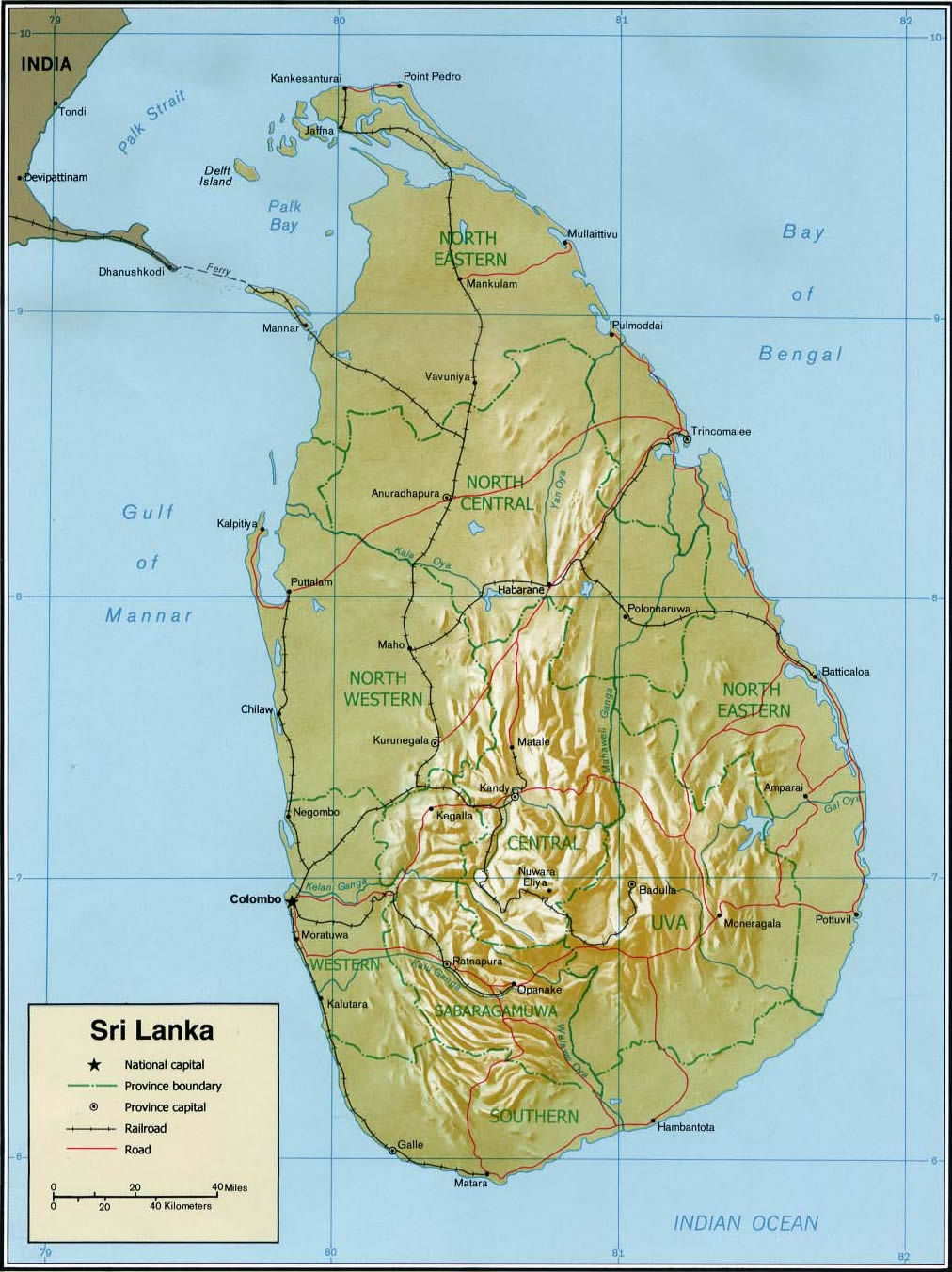Serendipity and War
Serendib?
 Medieval Arab
merchants, who visited Sri Lanka to trade in
pearls and precious stones, called Sri Lanka Serendib.
The English word serendipity, which
means a happy, accidental discovery, came from this
name. Unfortunately, this beautiful and once happy
island is torn by civil war.
Medieval Arab
merchants, who visited Sri Lanka to trade in
pearls and precious stones, called Sri Lanka Serendib.
The English word serendipity, which
means a happy, accidental discovery, came from this
name. Unfortunately, this beautiful and once happy
island is torn by civil war.
The two main peoples who live in Sri Lanka, the Sinhalese and the Tamils, arrived at different times and from different parts of India. The predominantly Buddhist Sinhalese settled in the south. They now make up 74 per cent of the total population. The Tamils settled primarily in the north and east of the island and today make up 12 per cent of the population. They are mainly Hindu.
Since the island was strategically placed on the major Indian Ocean trade routes, it drew European traders who were looking for spices and other resources. The Portuguese were the first to arrive in 1505. They were followed by the Dutch in 1638 and the British in 1796.
The road to War
The British found that one of the easiest ways to control their empire was the policy of divide and rule. This meant setting the different groups within a country against each other so that there was no national unity.
The Tamils were prominent in the British colonial administration, despite being a minority. They also dominated the country's economic and political life. Many Sinhalese resented this and felt that the British favoured the Tamils.
Ceylon, as Sri Lanka was called then, formally gained independence in 1948, though the country had held its own elections and administration since 1931. At first the country made good progress because of high government spending on education, health and food subsidies. However, the Sinhalese majority governments began discriminating against the Tamil minority. They made Sinhala the official language and there was official bias against Tamils for government posts. Tamil students had to gain higher marks than Sinhalese for university places.
In July 1983 riots, arson and the killing of Tamils in state-sponsored violence encouraged thousands of Tamil youths to join guerrilla groups. They were fighting for an independent Tamil state in the north and east of the island. A full-blown war soon raged, which continues to this day.
Beaches and Tea
Sri Lanka is one of the most beautiful places in the world with sandy beaches, lush green vegetation, ancient monuments and cultural riches. Tourism is very important to the economy, though war and ethnic tensions have reduced the number of visitors. Golden beaches, sheltered by coconut palms and washed by warm, blue seas are typical of Sri Lanka. The beaches on the southwest between Beruwela and Hikkaduwa are still particularly popular.
Tea is one of Sri Lanka's leading exports. The tea estates and factories have become tourist attractions. The country is famous for its spices such as cinnamon, cardamom, cloves, nutmeg and pepper. Underneath the lush greenery and natural beauty, however, is stark poverty and exploitation. Most Sri Lankans work in agriculture and estate workers are paid only for those days they are actually needed to work. The pay is low and the cost of living is rising. There are many social problems and workers have poor living standards.
English for Unity
The English language used to represent the power of foreign rulers. Today, it is one of the best hopes for bringing peace to Sri Lanka. Sinhalese and Tamil have both been official languages since 1987, and English has a special role as a link language. Many people hope that a greater use of English (especially in schools), will bring both communities closer together. However, English is still the language of the rich and educated. Most Sri Lankans live in villages and only speak their own language. Younger people are keen to learn English; with 30 per cent unemployment, being able to speak it is an advantage in the job market.
“In the English-speaking World”